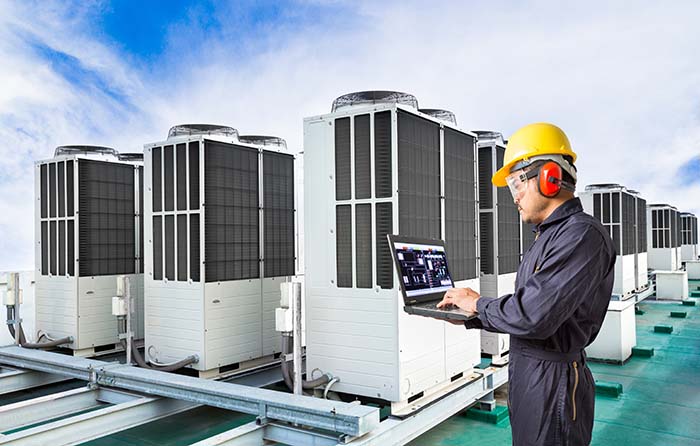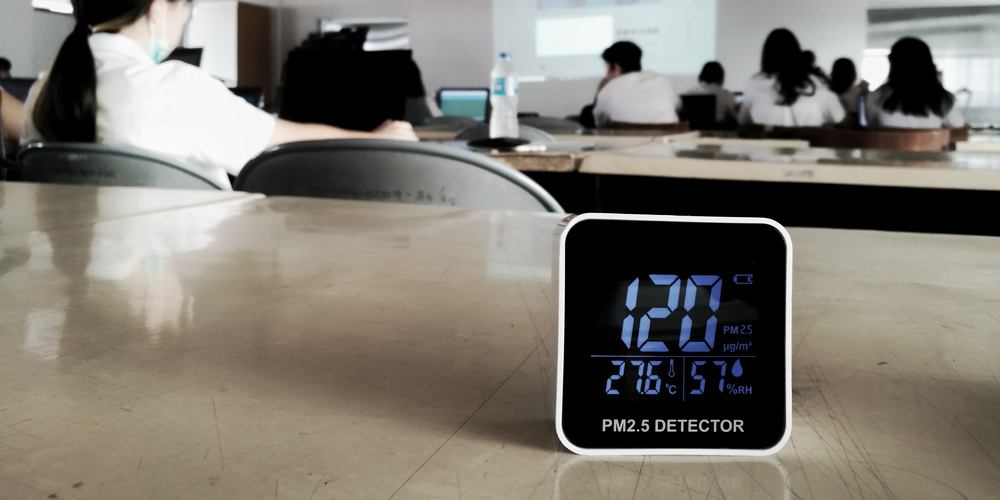Approved Document F: What It Changed for Indoor Air Quality
The new Approved Document F came into effect on 15 June 2022. In this article we list out the most relevant changes to "Building Regulations 2010 Part F: Ventilation", detailed in the 2021 "Approved Document F Volume 2 - Buildings other than dwellings".
The guidance is relevant to both new buildings and when retrofitting old buildings, so anyone who is responsible for non-residential buildings should be aware of the changes. If you are a facilities manager, estate manager or a landlord for office buildings, schools, healthcare estates, factories or food production facilities or any other workplace, then this article is for you.
There are several changes from the previous Part F, but we’ve combed through the document so you don’t have to, and picked out the most important ventilation changes, listed below.
For full details, you can also download Approved Document F.
Change 1: CO2 monitoring in offices
What it says:
Paragraph 1.21 – In new buildings, [occupiable rooms] should have a means of monitoring the indoor air quality. This may be achieved using CO2 monitors or other means of measuring indoor air quality.
In offices, if you are using CO2 monitors, they must:
- Be non-dispersive infrared (NDIR) type CO2 monitors.
- Be mains powered.
- Be placed at breathing height and away from windows, doors or ventilation openings where practicable.
- Be placed at least 500mm from people where practicable.
Note that this only applies to rooms larger than 125m3 in volume, or 50m2 floor area, and smaller than 800m3 in volume, or 320m2 floor area.
Read more about good CO2 monitoring in our article: Why Buying a CO2 Monitor for Your Workplace is Not Enough.
Change 2: UV-C & HEPA filtering for recirculated air
What it says:
Paragraph 1.37 – Ventilation systems that, under normal operation, recirculate air between more than one space, room or zone should also be able to operate in a mode that reduces the risk of the transmission of airborne infection. This can be achieved by one or more of the following.
It goes on to say that if your indoor air is not 100% fresh air, then it must be filtered, either using a HEPA filter or UV-C germicidal irradiation in your HVAC system or ductwork.
If there is no filter, then you cannot have a system that recirculates air within spaces or between different spaces. Ventilation systems that, under normal operation, recirculate air between more than one space, room or zone, should also be able to operate in a mode that reduces the risk of the transmission of airborne infection.
Change 3: Minimising external pollutants
What it says:
Paragraph 2.1 – Ventilation systems should be designed to minimise the intake of external air pollutants, [if]...
a. the pollutant values in the location of the building exceed any of the limits [from Schedule 2 of the Air Quality Regulations 2010].
b. the building is located near to […] sources of significant local pollution.
If either a or b are true for your building, you will need to control your ventilation intake, by either placing them away from sources of pollution, facing them away from consistent wind direction. More details are in paragraphs 2.2 to 2.6 of the approved document.
Notably, paragraph 2.6 of the guidance stipulates that you can reduce or close ventilation during periods of heavy pollution.
What it says:
Paragraph 2.6 – Where sources of pollution vary with the time of day, such as urban road traffic, it may be acceptable, for time-limited periods, to take one of the following actions.
a. Reduce the flow of external air into ventilation intakes.
b. Close ventilation intakes when the concentrations of external pollutants are highest.
NOTE: In these circumstances, expert advice should be sought.
This authorisation to minimise re-circulation under certain conditions brings opportunity for both increased indoor air quality and reduced energy use.
To check the outdoor air quality, this can be done either through an air quality assessment, or by seeking expert advice for modelling or monitoring data.
For a more agile approach, we would recommend an indoor air quality monitor that provides real-time data on outdoor air quality, so you know when to shut your windows and control your HVAC system so it is not recirculating polluted air. These types of monitors can also integrate with your HVAC system to maintain temperature and humidity across your entire building.
After you have completed your IAQ assessment, we recommend an optimal approach by adding filtration to your air inlets. We size and select appropriate filter materials that reduce ingress of external pollutants.
Change 4: New airflow rate in common spaces
What it says:
Paragraph 1.33 – Common spaces in offices, including rooms or spaces used solely or mainly for circulation, such as corridors and lift lobbies, should be provided with either of the following.
a. Natural ventilation by appropriately located ventilation opening(s) with a total opening area of at least 1/50 of the floor area of the common space.
b. Mechanical ventilation installed to provide a supply of outdoor air of 0.5 litres per second per m2 of floor area of the common space.
While for occupiable rooms in offices, the guidance recommends outdoor air should be supplied at a rate of 10 litres per second per person, or 1 litre per second per m2 floor area (whichever is highest), it is different for common spaces.
The new guidance recommends that mechanically ventilated common spaces in offices have a minimum air supply rate of 0.5 litres per second per m2. Note that this is below the 1 litre per second per m2 that was in the draft guidance.
Change 5: Individual VOC testing strategies
What it says:
Appendix B3 – As an alternative to using TVOC, the individual VOCs may be applied where their use is supported by robust independent evidence. Public Health England’s Indoor Air Quality Guidelines for Selected Volatile Organic Compounds (VOCs) in the UK should be used. Testing against these metrics is likely to be more complex than testing against TVOC.
As well as in Part F, individual VOC testing is a requirement in BREEAM and WELL standards.
Change 6: Access for maintenance
What it says:
Paragraph 1.7 – Reasonable access should be provided for maintaining ventilation systems, including all of the following.
a. Providing access to replace filters, fans and coils.
b. Providing access points for cleaning ductwork.
c. Providing access for the general maintenance of plant
This means that design engineers and installers must ensure that existing access points remain and suitable access arrangements are available for facilities managers or maintenance engineers to keep both the HVAC plant and ductwork clean.
Note on pollutant exposure limits
The new guidance for Part F was released in early 2021, before the World Health Organisation released their updated global air quality guidelines in September.
To see a table of what’s changed, take a look at our article Demystifying UK Indoor Air Quality Guidelines for Offices and scroll down to WHO.
Future standards
The government are currently consulting on a number of approved documents as part of the Future Homes and Buildings Standards consultation.
ARM Environments will be requesting amendments to Part L to address the issues raised in our article Part L vs Part F: Battle of The Regulations.
***
Download Approved Document F




